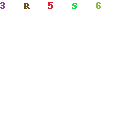 When I was approached about reviewing The Real Wizard of Oz
When I was approached about reviewing The Real Wizard of OzAs I mentioned in my review of The Wonderful Wizard of Oz, I thought it was strange and nonsensical. I was really surprised that the book became a best seller to the extent that Hollywood would sit up and take notice. Now that I've read about the man behind Oz though, I'm not as surprised. I AM glad that I read his book before I read about him.
Written by Rebecca Loncraine, The Real Wizard of Oz
Baum was an interesting man to be sure and Loncraine uses her own writing skills and style (which is very unique) to make you want to pay attention to the details of his life. You know how some biographies can be so bland that you just graze through, hoping to pick up a little bit? Loncraine definitely uses her words in interesting ways and writes very descriptively so that there were few things that I missed about Baum's life - including little things like the fact that he very much liked one of his relatives' cottage cheese. That said, her writing style is often so flowery that I had a hard time keeping his relatives straight and I can't tell you which it was that made the aforementioned cottage cheese. The first part of the book opens up by talking about his relatives and family history, but figuring out who was who was somewhat difficult, simply because Loncraine's style. However, the writing smooths out and it's easy to pick up the pace. She certainly keeps the reading audience interested in the material.
Baum himself was a man I probably would not have gotten along well with for having nothing in common with him. He had no business sense about him. In fact, his wife ended up owning all of the rights to his work to protect and manage their assets. Baum himself was forced to file bankruptcy late in his career and had very bad credit, which is sad because he made a good fortune off of his Oz stories. He just seemed to spend it mindlessly, enjoying living the high life instead of managing his profits wisely. He was also very much into engaging spirit mediums and was a professed Theosophist (admitting the existence of a God but not necessarily a personal one, favoring nature). As Loncraine points out, his belief system seeps into his stories, which is something that should be expected. She gave various examples from different stories to show how he wrote out his beliefs in these children's tales. (Yesterday I mentioned that The Wonderful Wizard of Oz was weird. Loncraine attributed all of its originality to his imagination and spirituality. Some of you pointed out in the comments that WWofO was an economic allegory. I didn't get that impression from Loncraine, nor did I get it from reading the book but apparently that is an argument and one I wanted to make sure to point out in this post.)
The one truly great thing about Baum was his love and faithfulness to his wife. They were married for thirty-seven years before he died (in 1919) and they seem to have had a wonderful marriage in the sense of their faithfulness to and great happiness with one another. He repeatedly assured her that she was the only woman that he could and ever did love. She missed him greatly when he died. His wife, Maud, was able to see Oz come to life in the 1939 production with Judy Garland. Publicity photos show Maud and Judy reading The Wonderful Wizard of Oz together.
On the whole, I thought this biography of L. Frank Baum was very intriguing. He seems a man that was hard to know, despite the fame and attention to his life. He certainly lived through a lot over the course of his lifetime (the Civil War, the Industrial Revolution, etc.). As Loncrain points out in this book, there is a lot that we will likely never know about Baum because his imagination worked overtime -- even when he was giving interviews to reporters. He painted things as he wanted to see them for his reading public and that will always mask who the man is to some extent. However, for her part, Loncraine does a pretty decent job at presenting as many facts as are possible, being quick to point out when the facts are unknown. I liked that.
I'm glad to have read The Real Wizard of Oz
****
Click here to see my review of The Wonderful Wizard of Oz.







1 comment:
Great review - very intriguing and interesting subject matter.
Post a Comment